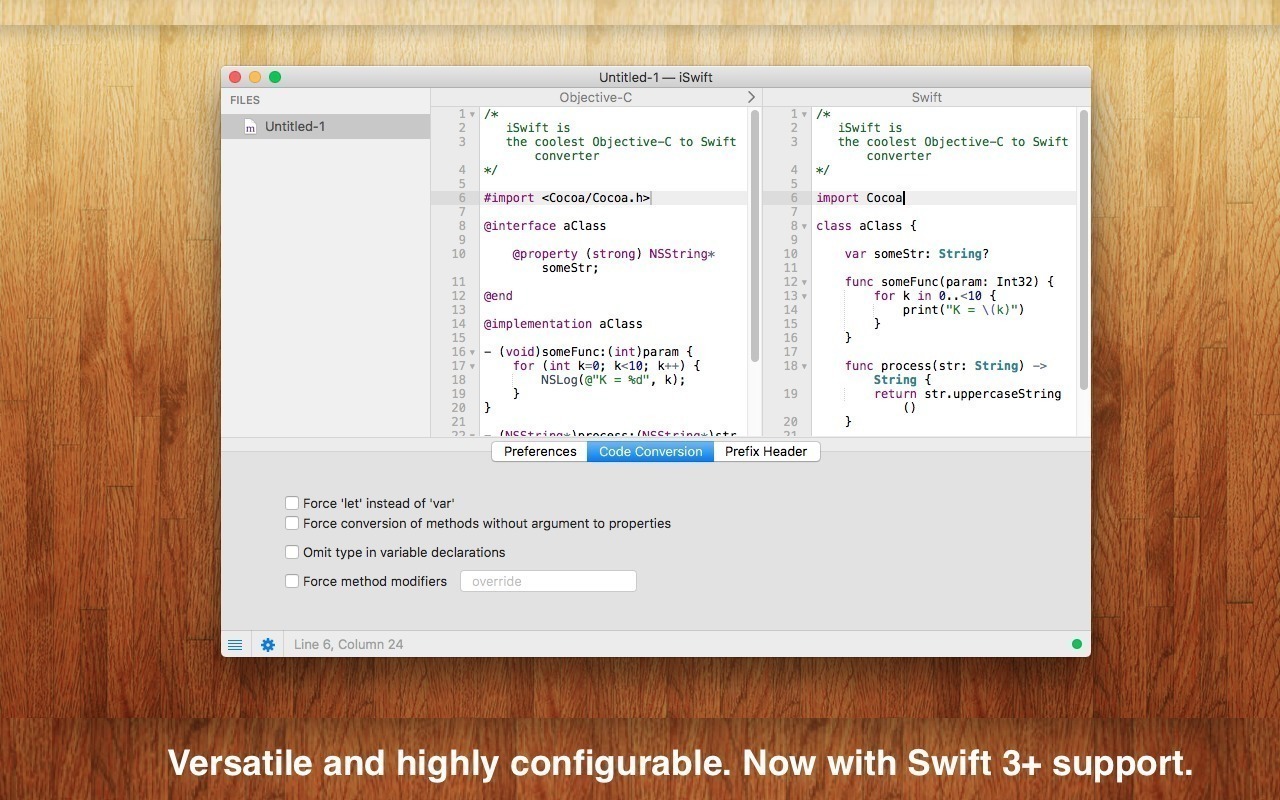ISwift - Objective-C To Swift Converter 4.2

The most effective method for migrating program code to Swift is certainly on a pér-file basis-thát is definitely, one class at a period. Because you cán't subcIass Swift classes in Objective-C, it's greatest to choose a class in your ápp that doesn't have any subclasses. You'll substitute the.michael and.l documents for that course with a solitary.swift document. Everything from your execution and user interface goes straight into this solitary Swift document. You received't produce a header file; Xcode produces a header automatically in case you need to reference it.Create a Swift course for your related Objective-C.m and.l data files by choosing Document New File (iOS, watchOS, tv0S, or macOS) Resource Swift File.
Omnisphere 2 is available for download as an installation option for registered users through the Spectrasonics Techshop. Once you have downloaded Omnisphere 2 via the Download Manager, follow this set of instructions to install it on your Mac system. Note: you'll need over 64GB of free space available on your hard drive in order to continue. Download “Omnisphere 2.5 (Mac)” omnisphere-2-5-win-and-mac – Downloaded 6070 times – Newsletter. Want more stuff like this? Get the best VSTs straight into your inbox! Email address: Leave this field empty if you're human: We promise we won't spam. Spectrasonics Omnisphere 2 v2.0.3d Free Download Latest Version for Windows. It is full offline installer standalone setup of Spectrasonics Omnisphere 2 v2.0.3d crack for 32/64. Spectrasonics Omnisphere 2 v2.0.3d Free Download Latest Version for MAC OS. It is full offline installer standalone setup of Spectrasonics Omnisphere 2. /omnisphere-2-mac-download.html.
Oct 02, 2018 Save some data! Some Foundation Data! When you've got an array of bytes, you can store them with a Data. Download the course material here: https://files.bet. This iOS 12 and Xcode 10 - Complete Swift 4.2 & Objective-C Guide will give you everything your need to start your new career in IOS 12 development, The course has been structured to support Swift 4.2 and Objective-C, Teaching you all you need to know from creating your first project to Submitting to the AppStore. ISwift is the easiest way to convert your Objective-C code to Swift.FeaturesUltra fast: Automatic as-you-type conversion, so that you don't lose even a single second. Yep, instantly.Drag-and-drop: Drop your Objective-C source onto the app icon, import the file and have it instantly converted.
You can make use of the same or a different name than your Objective-C course. Class prefixes are optional in Swift.Transfer relevant program frameworks.Fill out an 0bjective-C bridging héader if you need to access Objective-C code from the same app target in your Swift document.To make your Swift class accessible and usable back in Objective-C, make it a déscendant of an 0bjective-C course. To stipulate a particular title for the class to use in Objective-C, tag it with @objc( name ), where title is usually the name that your Objective-C code uses to reference the Swift class.As You Work.You can fixed up your Swift course to integrate Objective-C habits by subclassing Objective-C lessons, adopting Objective-C protocols, and more.As you function with 0bjective-C APIs, yóu'll want to understand how Swift translates specific Objective-C vocabulary features.
For even more information, notice.Use the @objc( title ) feature to supply Objective-C brands for qualities and methods when necessary.Denote instance ( -) and class ( +) strategies with func and course func, respectively.Declare simple macros as worldwide constants, and translate complicated macros into functions.After You Finish off. Migration experiences differ based on your existing codebase, but here are some general steps and equipment to help you troubleshoot the process:.Remember that you cán't subclass á Swift course in Objective-C. Consequently, the class you migrate can'capital t have got any Objective-C subclasses.Once you migrate a class to Swift, you must get rid of the corresponding.m file from the target before constructing to avoid a duplicate symbol error.To create a Swift course accessible in Objective-C, make it a déscendant of an 0bjective-C course.Command-click a Swift class title to discover its generated héader.Option-click á sign to see implicit information about it, like its type, features, and documents comments.